Land Rover Series II,IIA,III repair manual 1958-1985
Land Rover Series 2, 2A, and 3 1958 to 1985 Petrol and Diesel Haynes Service and Repair ManualNEW hardback 150 pagesOther Land Rover Service and Repair Manuals click hereLand Rover Series 2, 2A & 3 Petrol 1958 - 1985 Haynes Owners Service & Repair Manual Covers: 2.25 litra (2286) 4-cylinder Diesel Does NOT cover 6 Cylinder or V8 engines., 24V electrical systems or forward control models. Inside this manual you will find: Routine Maintenance, tune-up procedures, engine repair, cooling and heating, air-conditioning, fuel and exhaust, emissions control, ignition, brakes, suspension and steering, electrical systems and wiring diagrams.
|
Series products function leaf-sprung suspension system with selectable two or four-wheel drive (4WD); although the Stage 1 V8 form of the Series III featured permanent 4WD. All three systems could possibly be started with a front hand crank along with the option of a rear power takeoff for add-ons.
The successor toward effective show I became the Series II, which spotted a production run from 1958 to 1961. They arrived in 88 in (2,200 mm) and 109 in (2,800 mm) wheelbases (ordinarily known as the 'SWB' and 'LWB'). This is the very first land-rover to receive the interest of Rover's styling department- main Stylist David Bache created the familiar 'barrel side' waist to pay for the vehicle's wider track therefore the better build associated with vehicle cab variant, presenting the curved part house windows and curved roof nonetheless used on latest Land Rovers. The show II ended up being 1st automobile to make use of the well-known 2.25-litre petrol motor, even though the earliest 1,500 roughly brief wheelbase (SWB) models retained the 52 hp (39 kW) 2.0-litre petrol system through the Series I. This bigger petrol motor created 72 hp (54 kW) and had been closely pertaining to the 2.0-litre diesel unit however being used. This motor became the conventional Land Rover product before the mid-1980s when diesel engines became more popular.
The 109-inch (2,800 mm) Series II Station truck launched a twelve-seater alternative together with the typical ten-seater design. This was mainly to make use of UK tax laws and regulations, in which a vehicle with 12 seating or even more had been classified as a bus, and was exempt from acquisition Tax and specific Vehicle income tax. This made the twelve-seater not just economical to purchase versus 10-seater version, and less expensive than the seven-seater 88-inch (2,200 mm) facility truck. The twelve-seater design stayed a highly preferred body design for a long time, becoming retained on the later Series and Defender variants until 2002, when it was dropped. The uncommon condition associated with the twelve-seater stayed through to the end---such vehicles are classified as minibuses and so might use coach lanes and (if registered properly) might be exempt from the London obstruction Charge.
There was clearly some amount of over-lap between Series we and show II production. Early Series II 88-inch (2,200 mm) automobiles had been fitted utilizing the old 2-litre petrol motor to utilize up present stock from production of the Series I 107-inch (2,700 mm) place truck continued until late 1959 due to continued requirements from export areas and also to permit the creation of Series II components to achieve complete degree.
The intake/inlet over exhaust (IOE) motor, also referred to as F-head (in america) and pocket device, is a valvetrain configuration found in very early four-stroke internal combustion machines. The configuration consist of inlet valves located in the cylinder mind and exhaust valves located in the cylinder or engine block.
IOE machines were popular during the early motorbikes, initially utilizing the inlet device becoming run by motor suction rather than a cam-activated valvetrain. When the suction-operated inlet valves reached their particular limits as motor rates enhanced, the brands changed the styles with the addition of a mechanical valvetrain the inlet valve. Some automobile manufacturers, like Willys and Rolls-Royce, furthermore made IOE engines with regards to their cars. Rover made a line of motors with an especially efficient form of the IOE induction program.
Various design with the reverse program, fatigue over inlet, or EOI, have already been made.
The SII and SIIA have become tough to distinguish. There were some small cosmetic modifications, nevertheless most crucial modification had been under the bonnet within the guise associated with new 2.25-litre diesel system. Body configurations offered by the factory ranged from short-wheelbase soft-top toward top-of-the-line five-door facility wagon. In 1967 a 2.6-litre in-line six-cylinder petrol engine ended up being launched when it comes to long-wheelbase designs that also posses servo-assisted brake system. 811 of these had been NADA (or us Dollar region) vehicles, which were the only long-wheelbase designs designed for the American and Canadian markets.
From February 1969 (home market), the headlamps relocated in to the wings on all products, and also the sill panels had been redesigned become shallower a couple of months a short while later.
The Series IIA is considered by many probably the most robust Series model built. Additionally it is the sort of classic Land Rover that features highly inside public's perception associated with the land-rover, from the most appearances in preferred films and television documentaries occur Africa for the 1960s, such as for instance Born complimentary. In February 1968, just a few period after its manufacturer was indeed subsumed, under national stress, to the Leyland engine organization, the land-rover celebrated its twentieth birthday, with total manufacturing to date only short of 600,000, which over 70per cent have been shipped. Definitely it absolutely was whilst the Series IIA was at production that sales of utility Land Rovers reached their particular top, in 1969--70, whenever business of over 60,000 Land Rovers a year had been taped. (For contrast, the deals regarding the Defender lately have been around the 25,000 degree considering that the 1990s.) As well as record purchases, the land-rover ruled numerous world areas- in Australia in the 1960s Land Rover presented 90% of 44 marketplace. This figure was recurring in a lot of nations in Africa and center East.
The Series IIA FC launched in 1962 was based on the Series IIA 2.25-litre petrol motor and 109 in (2,769 mm) framework, because of the cab situated across system to give more load room. Export cars had been initial Land-Rovers to get the 2.6-litre petrol motor. Many instances had an ENV (durable) rear axle, a matching front axle emerged later on. Tyres had been huge 90016 sort on deep-dish wheel rims to spread the bottom fat with this hefty vehicle. These motors were notably underpowered for the enhanced load ability (1.5 long tons or 1,500 kg), and most had a difficult working lifetime. Less than 2,500 were made, and a lot of have a computer program human anatomy, but surviving examples frequently have personalized bodywork. With an upgraded powertrain, they may be put as a small motorhome.
The show III had similar human anatomy and engine options due to the fact preceding IIa, like station wagons additionally the 1 great deal versions. Little altered cosmetically from the IIA on show III. The show III is considered the most typical Series automobile, with 440,000 regarding the type built from 1971 to 1985. The headlights had been moved to the wings on late production IIA designs from 1968/9 onward (ostensibly to conform to Australian, United states and Dutch illumination regulations) and stayed in this position the Series III. The standard material grille, showcased on the Series I, II and IIA, is changed with a plastic one when it comes to Series III model. The 2.25-litre engine have its compression increased from 7:1 to 8:1, increasing the power somewhat (the high compression engine was in fact an optional fit from the IIa model for several years). During Series III production run from 1971 until 1985, the 1,000,000th Land Rover rolled from the production range in 1976. The Series III saw many alterations in the subsequent section of their life as land-rover up-to-date the design to satisfy enhanced competitors. This is the first design to feature synchromesh on all gears, though some belated H-suffix SIIA systems (mainly the greater amount of costly facility Wagons) have made use of the all-synchro box. Consistent with early 1970s trends in automotive home design, both in protection and employ of more advanced items, the simple metal dashboard of prior brands had been redesigned to simply accept a moulded plastic dash. The tool cluster, which was formerly situated, is moved to the driver's side. Long-wheelbase Series III automobiles had the Salisbury backside axle (the differential housing and axle instance become one piece) as standard, even though some late SIIA 109-inch (2,800 mm) motors have them too.
In 1980, the 2.25-litre petrol and diesel machines received five biggest bearing crankshafts to increase rigidity together with transmission, axles and wheel hubs had been enhanced. It was the culmination of a number of revisions into the transmission that had been made considering that the sixties to fight the all-too-common problem of the trunk axle half-shafts breaking-in heavy usage. This issue had been partly as a result of the build regarding the shafts themselves. Because of the fully floating build associated with the backside wheel hubs, the one half shafts can be eliminated very quickly without being forced to jack the automobile from the surface. The propensity for commercial providers to overload their automobiles exacerbated this flaw which blighted the Series Land Rovers in a lot of of the export areas and founded a reputation that continues in several markets to the current day. This is inspite of the 1982 re-design (primarily the rise of driving-splines from 10 to 24 to lessen stress) that all but solved the difficulty.
In addition, brand new trim options are launched to really make the inside convenient in the event that purchaser therefore desired (many farmers and commercial people preferred the initial, non-trimmed indoor).
These adjustment culminated in April 1982 with all the introduction of this "County" spec. Station truck Land Rovers, available in both 88-inch (2,200 mm) and 109-inch (2,800 mm) sort. These have all-new fabric seats from Leyland T-45 Lorry, soundproofing kits, tinted glass alongside "smooth" alternatives built to appeal to the leisure owner/user.
Of most interest ended up being the introduction of the extreme Capacity pick-up towards the 109-inch (2,800 mm) framework. This is a pick-up vehicle burden bay that supplied 25% additional cubic capability than the standard pick-up style. The HCPU was included with heavy-duty suspension system and is popular with public utility companies and design technicians.
The show IIB FC made out of 1966 had been just like the show IIA Forward controls but added the 2.25-litre diesel motor as a choice. The 2.25-litre engine was the standard engine with this model, the 2.6-litre system being only available for export.
Heavy duty wide-track axles (designed by ENV) had been fitted to improve car security, as was a front anti-roll bar and revised rear springs which were attached over the axle in the place of below it. In the process the wheelbase is risen up to 110 in (2,794 mm). Manufacturing concluded in 1974 whenever Land-Rover rationalised its car number. Many IIB equipment were in addition used on the "1 Ton" 109 in vehicle.
The Series IIB FC made out of 1966 is like the show IIA Forward controls but added the 2.25-litre diesel motor as a choice. The 2.25-litre engine was the conventional system because of this model, the 2.6-litre motor becoming best designed for export.
High quality wide-track axles (designed by ENV) had been suited to enhance car stability, as ended up being a front side anti-roll bar and revised rear springs which were installed above the axle in place of below it. In the process the wheelbase ended up being increased to 110 in (2,794 mm). Manufacturing concluded in 1974 when Land-Rover rationalised its car number. Many IIB elements are also used on the "1 Ton" 109 in car.
South Africa
South Africa's union with land-rover started in 1949 once the first Series I 80-inch products were marketed in South Africa. In August 1950, vehicles Distributors construction (Pty) Ltd put together 1st land-rover CKD in interface Elizabeth, South Africa. 1st local creation of gasoline tanks and chassis in the slot Elizabeth plant was revealed in August 1963 and from then on the neighborhood information inside production of Land Rovers increasing steadily to 44per cent of vehicle fat by 1972. Regional material included: chassis, road springs, entire body, tyres, seat structures and furniture, electric battery, fibreglass roof and all sorts of cup. In 1974 Leyland SA had 3 assembly herbs. Neighborhood material increased more in 1980 with the show IIIS models fitted with in your area created petrol(R6) and diesel(ADE 236) engines. In 1992 the Blackheath factory into the Cape Province was defined as the greatest Land Rover CKD system outside of the UK.
Military
Britain
The British Army put Series Land Rovers in large numbers (and continues to use the modern-day Defender models). The British Army tested the 80-inch (2,000 mm) Series we land-rover almost once it absolutely was established in 1948. In those days, the Army was interested in building a specially designed armed forces energy 44 (the Austin Champ). But the Champ shown too complex, heavier and unreliable in battlefield conditions so the military looked to the Land Rover. Into the late 1940s the Ministry of Defence was interested in the standardisation of the vehicles and equipment. Part of this plan of action would be to fit Rolls-Royce petrol machines to all or any its automobiles (even though more are not really built by R-R). A batch of Series I Land Rovers are fitted with Rolls-Royce B40 four-cylinder motor, which needed customization to an 81-inch (2,100 mm) wheelbase). However, the engine ended up being too heavy and slow-revving, which stunted overall performance and produced torque that the Rover gearbox could only just cope with. Rover convinced the MOD that, thinking about the quantities of Land Rovers these people were thinking about ordering, your standard 1.6-litre system would suffice. The MOD began buying Land Rovers in batches from belated 1949. The original batches were for 50 vehicles, but because of the mid-1950s the military had been purchasing Land Rovers 200 automobiles at any given time.
Land Rovers had been implemented on Korean War in addition to Suez Crisis, and became standard light army motors throughout the Commonwealth.
However, as sixties progressed, increasingly more specialised models were created. Along with the traditional 'GS' (General Service) motors, a standard variant is the 'FFR' (Fitted For Radio', which have 24-volt electrics and a sizable engine-powered generator to power on-board radios. There were also Ambulances in the 109-inch (2,800 mm) show II and Series III chassis. A well-known version is the LRDPV (Long-Range wilderness Patrol automobile), frequently labeled as the 'Pink Panther', due to their distinctive light green sand camouflage. These 109-inch (2,800 mm) show IIs are stripped side and windscreens and installed with grenade launchers, a machine gun installing ring and long-range gas tanks and liquids tanks. These people were employed by the SAS for wilderness patrol and unique operations.
1983 Show III HT Lightweight
Because of the belated 1970s, the British Army had acquired around 9,000 Series III products, which were mainly a unique 'heavy weight' version of the 109-inch (2,800 mm) flaccid Top. These versions had enhanced suspension equipment and a new framework cross-member design. These were stated in 12-volt 'GS' models and 24-volt 'FFR' models. A little quantity were 88-inch (2,200 mm) GS and FFR designs, but in basic the military made use of the Air-Portable 1/2 ton, 88-inch (2,200 mm) "Lightweight" variation. The light was at services by many armies all over the world. In European countries perhaps the Dutch Landmacht additionally the Danish military put the Land-Rover Lightweight. As opposed to the petrol engine the Dutch and Danish Lightweights had diesel engines. Instead of the fabric top the Dutch people had PVC tops such as the modern-day land-rover 'Wolf'.
Additionally, there were in addition 101-inch (2,600 mm) Forward controls versions, 109-inch (2,800 mm) FV18067 ambulances built by Marshall Aerospace of Cambridge.
The Royal Navy and Royal atmosphere Force furthermore acquired and preserved small land-rover fleets through the 1960s and 1970s. The RAF put 88-inch (2,200 mm) products for communications, liaison, personnel transportation and airfield tractor obligations. The Royal Navy's fleet ended up being, naturally, little and consisted primarily of GS-spec and place Wagon models for workers and cargo transportation.
All-british army Land Rovers made use of the 2.25-litre four-cylinder petrol motor. However, some international consumers (such as The Netherlands) specified the 2.25-litre diesel device alternatively.
The land-rover normally the cornerstone the Shorland inside protection Patrol car produced by brief Brothers.
Australia
Australian Army Land Rover sets 2 anti-tank "gunbuggy" with a 106mm recoilless rifle.
Australian Army land-rover deployed to Namibia during UNTAG on screen on Australian War Memorial.
The Australian-made show 1, 2, 2A and 3 were popular because of the Australian Army, Royal Australian Navy and Royal Australian Air Force. Most are GS (General solution) flexibility cars with alternatives built for as long Range Patrol cars, ambulances, command reconnaissance cars, fire tenders and ceremonial cars.
The initial is brought to the Army in 1948 therefore the show 1 gradually changed the World War II era Austin Champs and Jeeps. The series 2 is introduced in 1958, the 2a in 1963 and series 3 in 1973. 72 associated with the series 2 were fitted as an anti-tank "gunbuggy" with a 106mm recoilless rifle.
The land-rover Perentie, generally regarded as a military variant regarding the land-rover Defender, was introduced in 1987, three years prior to the Defender ended up being named in 1990. Over 2,500 four-wheel drive and 400 six-wheel drive stay in service.
New Zealand
This new Zealand Army bought 640 of Australian-made show 1 between 1951-1953. An identical number of series 2 had been purchased in 1959-1962 and a little group of series 2A in 1965-1967. Brand new Zealand bought a small amount of ex-Australian series 2 and 2A vehicles in 1971-72, out from the share utilized by the ANZUK energy in Singapore, that have been usually re-manufactured by BLMC NZ Ltd in Wellington thus bring New Zealand develop plates. They are commonly labeled as a Land Rover "Skippy" and distinctive with differently reduce guards. 566 for the series 3, mostly 109" V8.s, were purchased in 1982-83 so that as of 2012 around 320 of those stay in provider.
What Land-Rovers?
Information at this time shows the NZ Army introduced 640 Series 1 80" Land-Rovers between 1951-53.
Then had been a batch of show 2 109" in 1959-62, some fitted with welders, generators, cranes, etc.
There have been several Forward Controls earned during 1960's for analysis.
There clearly was the initial group of show 2A 88" and 109" between 1965-67.
NZ Land-Rover Show 2A Ton FFW
NZ Land-Rover Series 2A Great Deal 106RCL
The Australian military offered some utilized 109" Land-Rovers around 1970-72. This batch came about mainly through the ANZUK detachments in bases eg Singapore.
a batch of primarily 88" Series 2A arrived to the brand new Zealand Army direct through the Australian Army in 1970-71. They've been known to Kiwis as "Skippys" and distinctive using their "cut protections". Nevertheless many of these may actually have now been integrated NZ, and not ex Australia.
AM's NZ Land-Rover Series 2A Ton Skippy
In current usage will be the group of 566 Series 3 109" phase One V8's that came betwen 1982-83. These vehicles are equiped just like the civilian stage 1 with a V8 system and 4 speeds gearbox. Twenty of these had been 'retro-fitted for Bosnia' with all the 300 TDi motor, disk brake system, hard-top and white paint. Eighty associated with the Stage people are offered by tender in Summer 2000.
PD's Land-Rover Show 3 V8
A write-up in the Evening Post (26/6/00) said NZ defence is in the means of changing the rest of the 320 phase One fleet and have looked over Humvees (good spec but too expensive) and Land-Rovers and Daimler-Chryslers.
NZ Army Series 2A 88"
An appealing small article had been imprinted in Land-Rover's dealership publication, the Rover/Alvis team News, dated might 1967:
"THE MILITARY GETS CONTROL OF"
"It's the exact same all over the world in virtually any self-respecting Army. The first order newer recruits are called upon to follow is the equal to exactly what in British Army parlance is Get dropped in! And it is the same for those fresh Land-Rovers when they 'joined' the New Zealand Army on a long-term wedding.
"The vehicles had been part of the brand new Zealand purchase revealed in the last issue of team Development. They were delivered CKD to brand new Zealand and assembled for Rover unique Zealand in the unique Zealand Motor systems plant at Auckland. A considerable number of local-made components were incorporated."
b&w photo # 1; a row of dark-green 88's with complete canvas (6 cars noticeable) in an industry with bonnets available, appearing to be standard motors except for their particular MOD front dual bumpers, just one ext. mirror, and their particular Army car data, such NZ32032, being about 2 ins higher, painted in white (traveler part best) privately of mudguard, within firewall end, levels using the headlights (just beneath the 'waistline' bend). The tyres be seemingly 6.50-16 Dunlop roadway Traks (just like on HUE-166) - "On parade for evaluation. A line of impeccably ended up vehicles, bonnet lids during the 'present', remain rigidly at interest while machines is examined more than by Cpl. G.J. Lonie, of Christchurch, a typical Force car mechanic attached to the first Composite Ordnance Company, and Cfn. N. Ward, of Ashburton (backside), a car electrician. These types of Land-Rovers spotted their first military service on a brigade exercise at Waiouru."
b&w picture #2; a row of dark-green 88's from opposing forward direction (4 cars visible) in front of a factory means building with two men standing in front of one of several Land-Rovers, one out of Army overalls, one in a suit - "'Sign right here please'. Warrant Officer W. Morfat gets control of a batch of 'Regulars' from Mr. Jack Grimmett, unique Zealand engine body set up Division management."
b&w image #3; the tailgate of just one dark green 88" try available plus the top rolled right back showing a complete match of broadcast equipment. It's full. There is apparently extremely little place to match an operator. There appears to be a strongly fabricated steel barrier attached over the chair bulkhead to avoid free gear entering the front control place. One-man in Army overalls in standing by the tailgate tuning kit, and a lab man in a lab coat was creating on a clipboard - "into the 'suppression cage', Mr. Garry Sharpe, unique Zealand Motor systems main inspector, and an Army N.C.O., test radio equipment for disturbance."
The Land-Rover 'Gunbuggy' variant sales are performed on some (existing) Series 2 and (new) Series 2A great deal G.S. Land-Rovers within the 1963-64 for the use within the Anti container role. The military procured 72 for the 106mm RCL guns for usage on Land-Rovers and M113 APCs. The Gunbuggy conversion rates on SWB Land-Rovers were carried out by RAEME (3 Base Workshops Broadmeadows Vic) and there some 'in-service' as late as 1996 (!!!!), witnessing task in Vietnam within their first ten years of service.Click picture for bigger form of photo As a normal instance, the Logbook from Gunbuggy 112-655 (24303650A 13/12/63) records the transformation being completed at an odometer checking of 185 miles and taking 301 man-hours (the logbook furthermore refers to the entire vehicle/unit as NSN 2320-66-036-9735).
The Gunbuggy was the principal medium-range anti-armour weapon of RAR. Just how many Gunbuggys are made and 'in-service'? Reference info on the Gunbuggy was as effective as non-existant until Mike Cecil, a specialist connected to the Australian War Memorial, posted their article detailing the Australian Army's platforms for his or her M40A1 106mm Recoilless Rifles (Army mag 8/02):
Land-Rover 88" Gunbuggys = 69 products
Series 2 Gunbuggys = 24 devices
Show 2A Gunbuggys = 45 products
A few Land-Rover show 3 109" trial products.
88" Gunbuggy Transformation information:
Pictures of Gunbuggy specific information are present from the why is they a Gunbuggy? webpage.
Fitted For Rifle 106mm -(Kit LV6/MT/C100064), aka "Gunbuggy" aka M40A1 106mm Recoilless Rifle (RCL)
3.4m barrel installed with .50 cal "spotting firearm" on the top
range 750m going target, 1700m fixed target
Ammo TEMPERATURE 17kg round, HEPT 17kg round
Traverse limitation 360 level restrictions -17 to +65
seatbelts fitted (vehicle utilized as fast as possible) because doorways are permanently removed along with roofing, tailgate etc
beefed-up back suspension and rear chassis (copes with additional weight and surprise)
forward face of front mudguard panels given "Minerva" therapy in show 2 and 2A, as a reinforcement measure, and side cutaway procedures put into show 2A
chair bulkhead cut away at the heart allowing gun help at center crossmember of chassis
barrel clamp ring set centrally to greatest of firewall (so no windscreen) -twin tiny windshields clamped on with accessories instead
wipers arranged thru the two ventilation panels (redundant actually as windshields only applied to parade)
weapon clamps on seatbox and ammo package on vertical part of bulkhead below dash controls
elimination of standard extra tyre mounts
double gasoline tanks and joining faucet fitted in seatbox, with toolbox in centre
fuel fillers eliminated to allow for layer stowage (fuel tank limits accessed under seats)
grab rails fitted inside top corners of back bathtub
exhaust muffler area modified to enable barrel cleaning rod stowage in a tube welded in accordance with framework PTO gap (move coverplate installed)
considerable back bodywork alteration to enable stowage of six 106mm shells parallel within sides of back human body (shell tubes expand to seat bulkhead, 3 each part)
rear floor has metallic channel or rut to steer front wheel of gun "tripod" and mounting for rear feet of "tripod"
technology to allow removal of gun to enable use within emplacement, airlift or "man packaging" (219kg -ugh!) into high surface etc and
camo netting installed various, ditto radio, jerry cans, packs.
Operational Suggestions:
run in pairs
bravery needed right here while you has zero protection from bullets, schrapnel, artillery and tank fire etc, (in keeping with all other infantry) and you are sitting on a prime target
hazardous whenever stopping difficult at speeds in reverse
have to notice team members directions implies unsuitability of helmets additionally the use of ear muffs (numerous operators have some hearing reduction)
crewed by (members chosen for potential at rate)
driver
firearm loader
gunner
"commander/navigator" (usually LCPL or CPL)
in a 1960's context this two unit group could easily get very near opponent place (by virtue of SWB transportation, reduced silhouette, relatively low automobile sound & pounds -not tracked), and either dig-in and surprise ambush (then leave scene ASAP) or, in open activity, started to a screaming stop and fire, reload and push off ASAP. The latter action would-be over in 15-20 seconds. Discover powerful inspiration to get "out-of-range" as previously mentioned above, and undoubtedly environment attack/retaliation: strictly "shoot 'n scoot"...
Weapon by Springfield U.S.A. carried 7 layer ability divided usually to 4 armour, 3 smooth target
ex-crew comments...
"It is a pig to push."
"Anywhere in a 30m distance toward back is a no-go room -severe shock or hemorrhaging ears or otherwise."
"The buggy was good till initial chance - next the gasoline gauge, signal and brake light filaments, and panel lighting are all U/S."
"Tankies get disturb on exercise. We "knocked out" lots of Leopards in 2 time. That's worth hundreds of thousands."
The Australian engineered and built Gunbuggy variation may be the longest portion Land-Rover transformation up to now. There have been withdrawn from services in the exact middle of the 1990's. High priced conversion rates were not replaced as much as G.S. variants of course, but this can be in addition an instance of perhaps not requiring or perhaps not creating something to supercede the 106mm RCL. It will be the "relatively perfect" anti-armour tool, for the reason that a 106mm slug will penetrate armour; profoundly and profoundly. So technical equipment were changed (eg motor and drivetrain) as the many years went by. Another exemplory instance of long provider may be the Ambulance transformation (aka blood field) that spent many years 'in-service' from 1963 to 1991, in addition due to the prohibitive replacement outlay associated with the bodywork.
Land Rover Series 2 And 2A Parts
Catalog of Land Rover Series 2 and 2A parts. By ordering from here you can be sure the parts and accessories you receive will fit your Land Rover Series II or IIA.
Find great deals on eBay for land rover series 2 land rover series. Shop with confidence.
Landrover Ranch located in New Mexico, USA, specializes in restoration, sales, and service of classic Series Landrovers.
Land Rover Discovery Series II Parts & Accessories: Air ...
Find Discovery Series II parts and accessories at Atlantic British, experts in the field since 1970. Head gasket sets, jerry cans, brake parts and more for the ...
Used Land Rover Discovery Series II Luxury - Kelley Blue Book
Select the year of the used Land Rover Discovery Series II Luxury you are looking to buy.
Classic Cars for Sale - Autotrader Classics
Land Rover Series IIs for sale near Quincy WA 98848 Change Location Find classic and antique cars, classic trucks, muscle cars and project cars for ...
Land Rover Series - Wikipedia, the free encyclopedia
Land Rover Series II: Land Rover entered production in 1948 with what was later termed the Series I. This was launched at the Amsterdam Motor Show.
Land Rover Discovery Series II Review - Research New ...
Read Land Rover Discovery Series II reviews & specs, view Land Rover Discovery Series II pictures & videos, and get Land Rover Discovery Series II prices & buying ...
Find great deals on eBay for Land Rover Series 2 in Other Parts. Shop with confidence.
2002 Land Rover Discovery Series II - Kelley Blue Book
2002 Land Rover Discovery Series II overview with photos and videos. Learn more about the 2002 Land Rover Discovery Series II with Kelley Blue Book expert reviews.
Land Rover Series 2, 2A, and 3 1958 to 1985 Haynes Service and Repair Manual 1959 1960 1961 1962 1963 1964 1965 1966 1967 1968 1969 1970 1971 1972 1973 1974 1975 1976 1977 1978 1979 1980 1981 1982 1983 1984

 0 Items (Empty)
0 Items (Empty)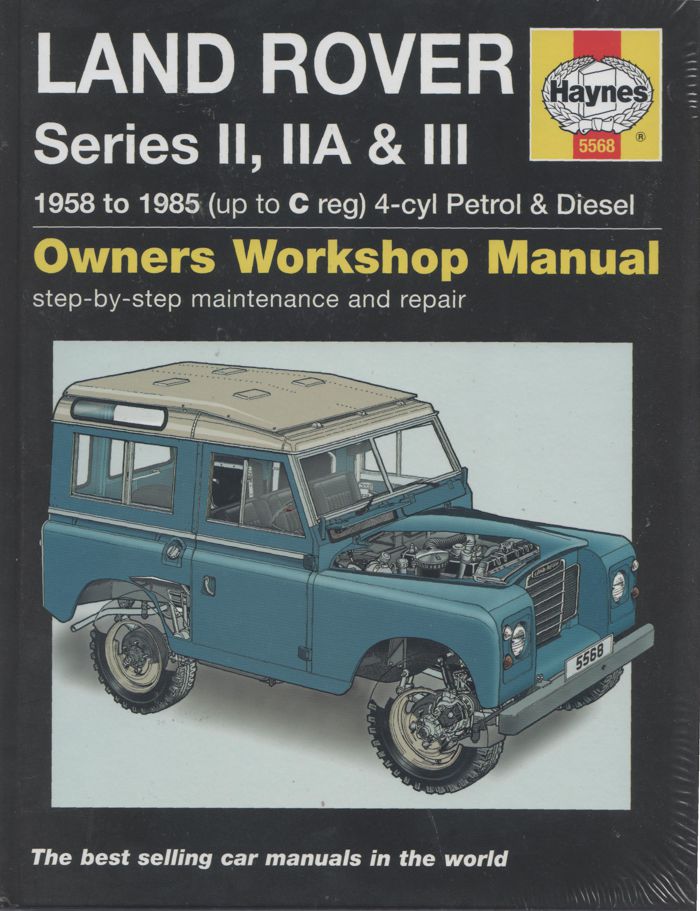

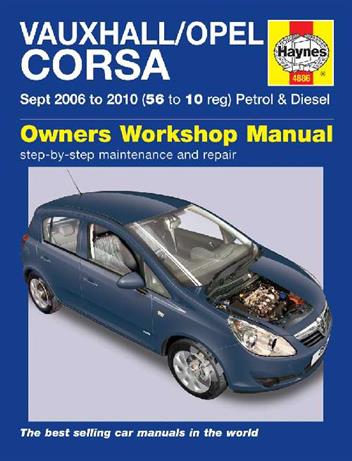
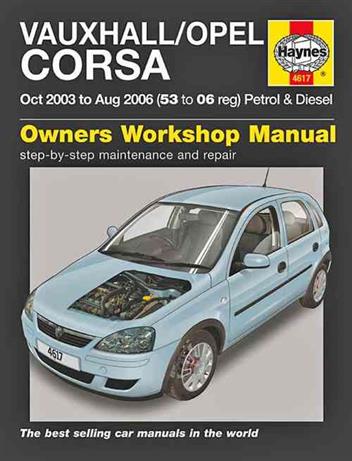
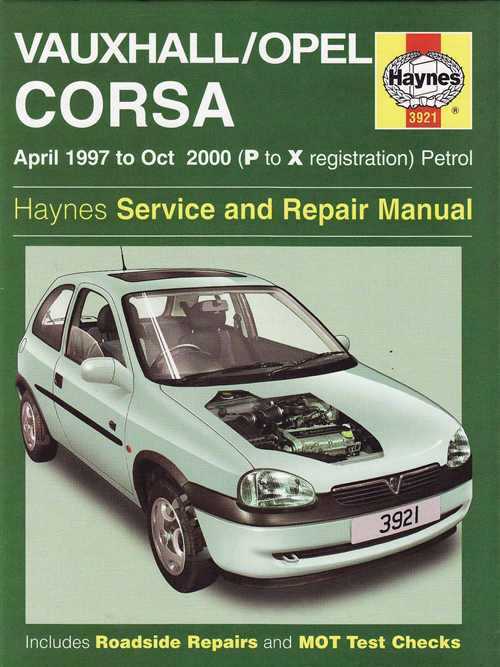
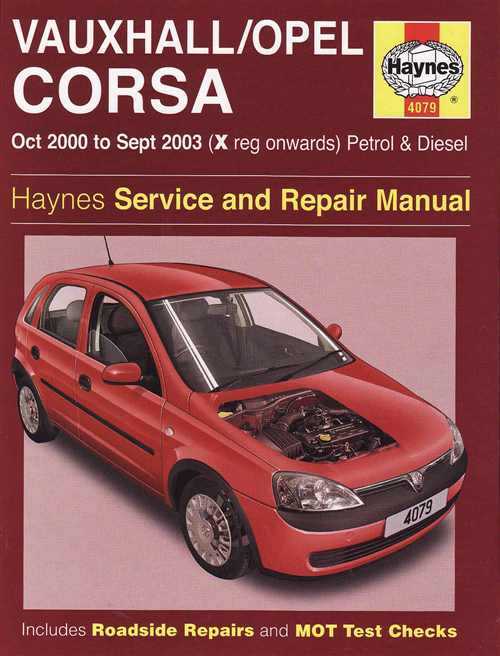
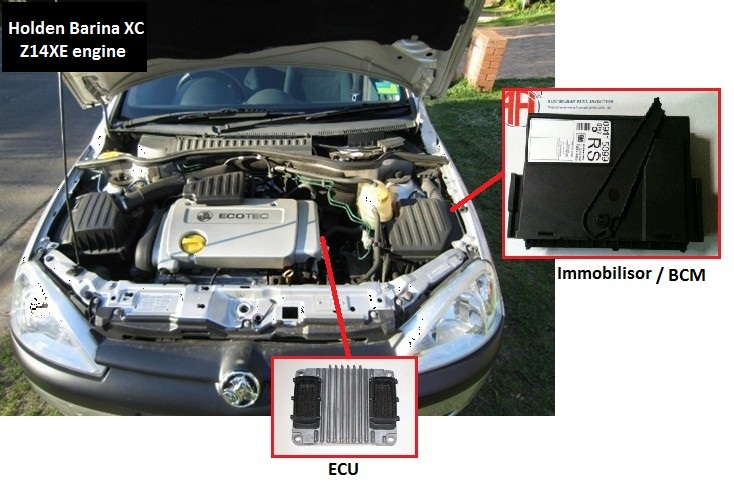
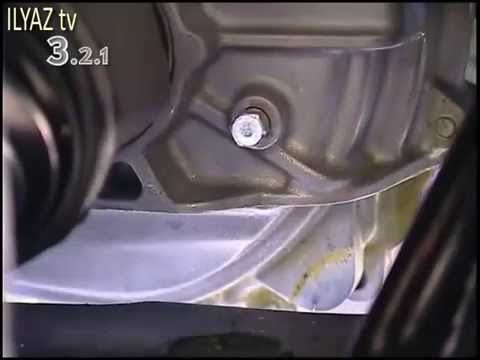 >
>